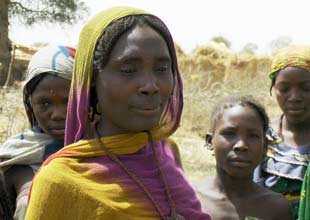I guess you can tell that I think the School of St Jude is a great project. What was it that convinced me?
I was enthusiastic from my very first encounter with the School, on the ABC’s
Australian Story program. I saw that Gemma had the right skills and was committed to the project. And I saw that the work of the School is much needed.
Since then, I have taken every avenue to find out more about the School. I read the annual reports on the website and the newsletters. I read blogs by people who have visited or volunteered there. I keep in touch with other supporters. I have learnt a lot about Tanzania and development aid to Africa. I met Gemma on her recent visit to Australia.
I have not discovered a single thing that has slowed my enthusiasm. If anything, I have become more amazed by the scope of the project and the effectiveness of its approach.
However, as I have some experience in program evaluation, I thought I would start to document this evaluation. It might help to give others the confidence to lend their support to the School of St Jude.
 Students perform at St Jude's Day
Students perform at St Jude's DayThere are three aspects to evaluating any program:
- Is it appropriate? Does it it fill a real need?
- Is it effective? Does it get good results?
- Is it efficient? Does it makes maximum use of its resources?
To get a good score, a program has to rate highly on all three things.
Here’s my thumbnail summary.
Does it fill a real need? Education is essential in breaking the cycle of poverty. Tanzania has one of the poorest education records in the world. UNESCO ranks Tanzania 6th last of all countries on education, with an average of 5.1 years education, compared with 18+ years for countries at the top of the table. Nationally, the teacher-student ratio was 59 in 2006. The Tanzanian government has been able to put more resources into education since gaining debt relief, but the task ahead is massive. 35% of Tanzanians live below the poverty line of $1 a day, and it is their children who fall below the average of 5.1 years of education. In these conditions, capable children from poor households have no chance of reaching their potential.
Does the School of St Jude provide an effective education for Tanzanian children? The School specialises in providing excellent education for capable children from poor homes. Rigorous screening ensures that children are academically capable and that they come from disadvantaged homes – if they have more than two rooms, concrete floors or electricity, they don’t qualify.
In 2007 the School enrolled 850 children in six grades. The school adds 160 children each year and is building a second campus. In national examinations, the School of St Jude has ranked third amongst all schools in the northern district and 10 children from St Jude’s have been in the top 20 of 17,000 students. So it is clear that the school is delivering excellent educational outcomes. It does this by providing meals, transport and clothing to students, and by strong educational practice, supported by professional development for teachers.
The School is in the process of building weekday boarding facilities and a secondary school. Long-term plans for a teachers college along with a tertiary education scholarship fund will meet the entire educational needs of bright children from impoverished homes.
Does it makes maximum use of its resources? I am constantly astonished by how much the School achieves with the resources it has. The resources include financial donations, volunteer work (long term volunteers and short term visitors) and in-kind or discounted services such as graphic design, website, accounting and shipping.
I am impressed by the no-frills decisons about infrastructure such as the school hall, which is basically a concrete slab with a metal roof. In addition, Gemma seems to have the ability to balance and prioritise her expenses to match the likely funds. On the one hand there is never anything left over, and on the other hand, she manages to avoid over-stretching.
The School has been successful in scaling-up its operations to fit the success in raising funds. This scaling-up has balanced needs such as new infrastructure, staff development as well as adding services such as school meals.
In an indepth feature on the
ABC news on 1 May 2007, Gemma says:
It's a very romantic idea, setting up a medical centre or an orphanage or a school, but the nuts and bolts of it, on the ground, is extremely hard.
If Africa was easy to solve, then it would have been solved a long time ago.
So, if you care about important issues like breaking the cycle of poverty, and want to know more about an effective program that is fighting poverty through education, keep reading this blog. When you are ready to lend your assistance, visit the school website and offer what you can. Oh, and there's no harm in telling your friends, is there?

Click here to subscribe to this blog.
























